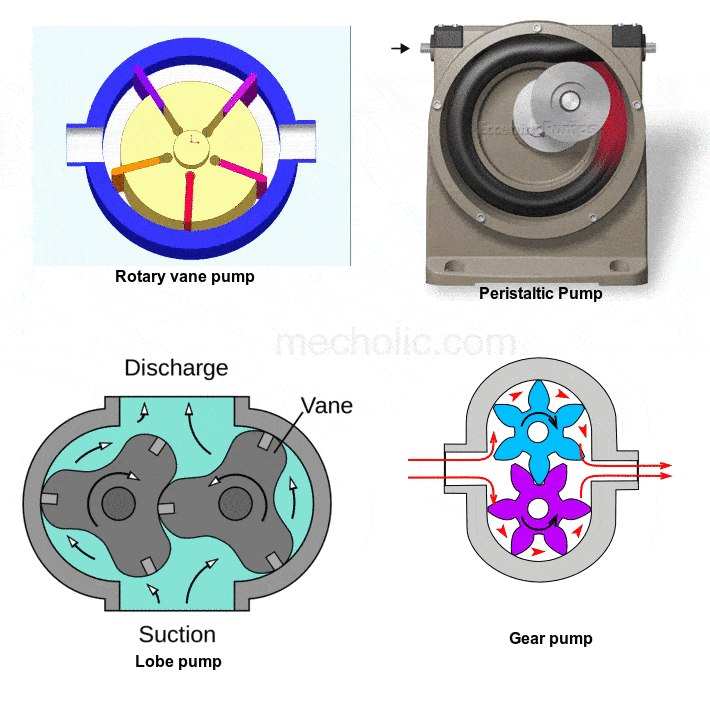Classification Of Pumps - Rotodynamic Pump And Positive Displacement Pump - Head Vs Flow Curve
What is pump?
A pump provides energy to a fluid and moves it by mechanical action. It increases either pressure energy, kinetic energy or both energy by converting mechanical energy. From a hydrodynamic point of view, the basic difference between a turbine and a pump is its fluid flow direction. In a turbine, the flow occurs from a high-pressure zone to a low-pressure zone, while in a pump, the discharge takes place from a low-pressure area to a higher-pressure area. There is an acceleration in the flow in a turbine, in the pump, the flow is decelerated.
Classification of pumps
Based on the transfer of mechanical energy, the pump can be classified as follows
1. Rotodynamic pump
In a rotodynamic pump, the increase in energy level is due to a combination of kinetic energy, pressure energy and centrifugal energy.
Rotodynamic pump again classified into
a) Radial flow pump
b) Axial flow pump
c) Mixed flow pump
Radial flow pump: in this type of pump, the energy transfer mainly occurs when the flow is in the radial path. Fluid enters along the axis or centre, is accelerated by impeller and exits radially. The radial flow pump is mainly known as a centrifugal pump. It gives high pressure but a low flow rate.
🔗Main components and working principle of a centrifugal pump
Axial flow pump: the energy transfer occurs when the flow is axial direction. The fluid is sucked and pushed in an axial direction. The high flow rate but low-pressure output.
Mixed flow pump: the energy transfer occurs when the flow comprises radial and axial components, results medium flow rate and pressure.
2. Positive displacement pump
In a positive displacement pump, the fluid is moved by trapping a fixed amount, and then forcing out the trapped amount of fluid to the discharge pipe at regular intervals. Inside the pump, where the cavity expands, it creates a low-pressure zone, causing the liquid to enter through the suction nozzle. The captured liquid was transported towards the discharge nozzle, where the expanded cavity was compressed. Since the cavity volume for the fluid suction is constant, it is considered a constant volume pump for every reciprocating cycle or revolution. Positive displacement pumps are classified into
Reciprocating pump: example - Piston pump, Diaphragm pump
Rotary pump: example - Rotary vane, Rotary lobe, Gear pump, Screw pump, Peristaltic pump
🔗Comparison between centrifugal pump and Positive displacement pump
🔗Read more about the positive displacement compressor here




.jpg)